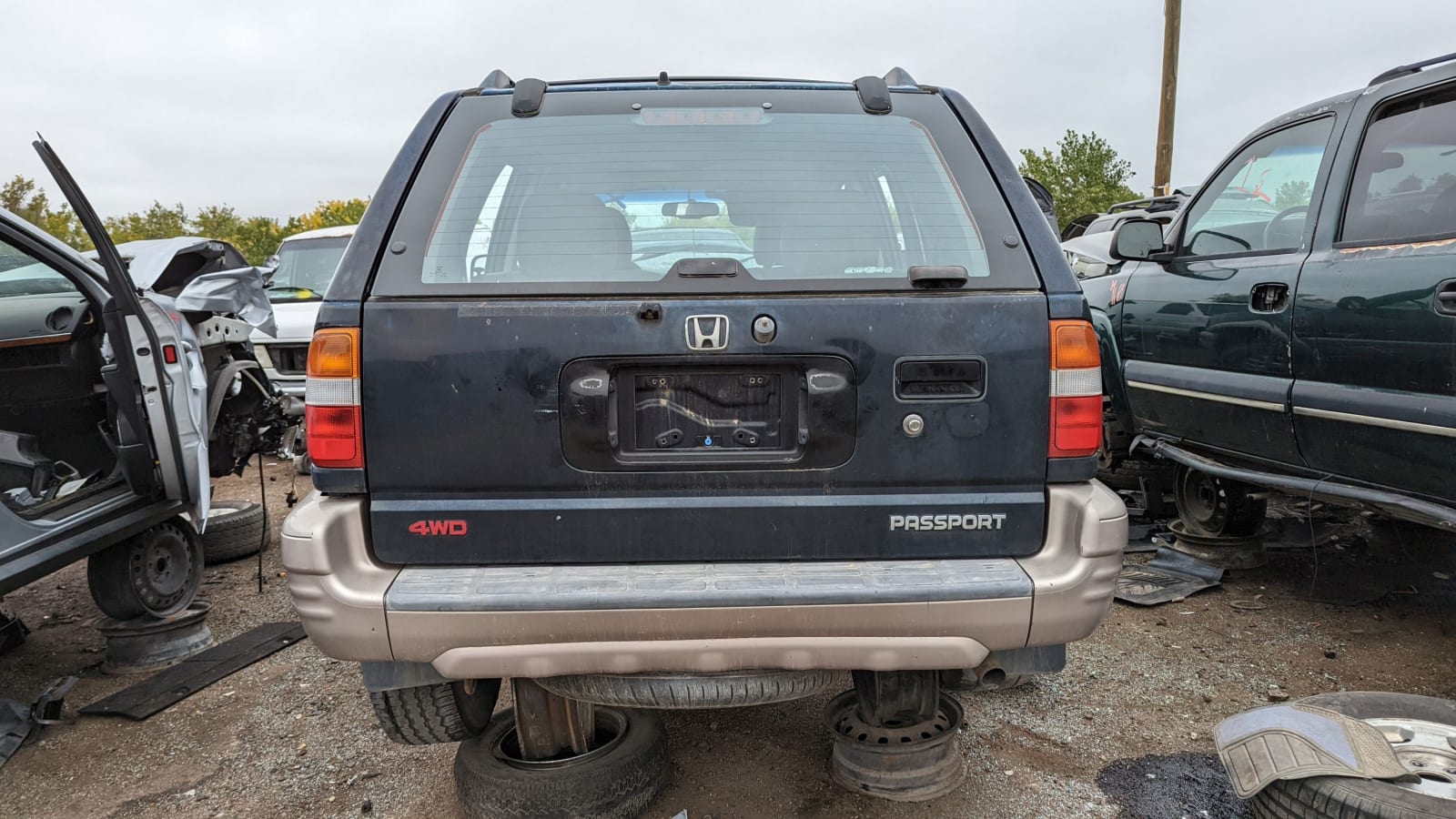Junkyard Gem: 2000 Honda Passport 4WD

The suits at American Honda Motor Company must have spent the bulk of the 1990s tearing out their hair in frustration as their rivals raked in big money from the sales of ever-more-profitable SUVs, even as American car shoppers lost interest in sedans and hatchbacks. Oh, sure, the Civic-based CR-V appeared here for the 1997 model year and sold well enough, but the lack of a larger SUV pained Honda more with each passing year. With the Acura MDX and Honda Pilot not ready for showrooms until the 2001 and 2002 model years, respectively, some stopgap had to be found. Isuzu stepped up and made a deal with Honda: the Rodeo would get Honda badges and become the Passport, while the Trooper would show up in Acura showrooms with SLX badges (for the 1994 and 1995 model years, respectively). Here’s one of those Passports, found in a Denver-area self-service yard.
Things got even weirder in the Isuzu/Honda world around the turn of the century, with the Honda Odyssey getting Isuzu badges and being sold as the Oasis. Fast-forward to 2009, and the only Isuzu-badged vehicles available new here were rebadged Chevrolets: the I-Series pickup (Chevy Colorado) and the Ascender (Chevy Trailblazer).

The Passport name has some interesting American Honda history, stretching back to the first Honda vehicle sold here (and the biggest-selling motor vehicle in human history): the Super Cub. American Honda Motor Company couldn’t use the Super Cub name on our shores, because Piper Aircraft had been selling a small plane called the Super Cub since 1949, so the motorcycle was called the Honda 50 over here. Eventually, this bike got a 70cc engine and became the Honda C70 Passport, sales of which continued through the middle 1980s. That means the Passports sitting in your local Honda dealership right now got their name from a one-cylinder motorcycle.

General Motors has a Passport connection as well; when GM created the Geo brand to sell rebadged Isuzus, Suzukis, and Toyotas in the United States, it created a marque called Passport to sell the Daewoo LeMans as the Optima in Canada (all the other vehicles sold by Passport dealers were Isuzus).

So, Honda’s need to offer SUVs in its American dealerships led to an arrangement with GM-connected Isuzu to sell these trucks with a model name bearing links to both companies. So much history in the junkyard!

Just as Geo-badged Toyota Corollas (mostly) got Delco radios, so did the Passport get Honda radios. Actually, this radio probably was made by either Mitsubishi or Fujitsu TEN, but it has Honda labeling.

The first-generation (1994-1997) Passports could be purchased with either a straight-four or a V6 under the hood, but the 1998-2002 models all came with this SOHC 3.2-liter V6, rated at 205 horsepower.

The cheapest 2000 Passports had two-wheel-drive and five-speed manual transmissions, but this one is an optioned up four-wheel-drive with a four-speed automatic.

The interior is worn but not completely trashed.

The digital gauge cluster means I can’t read the odometer without powering up the truck’s ECU, but we can assume the final mile total was respectable.

The MDX appeared the year after this truck was sold, and the Pilot the year after that. Sales of the Isuzu-built Passport overlapped those trucks into 2002, but ceased thereafter.

This is the first Rainshine Little Tree I’ve found in a junkyard vehicle. I don’t think this scent will topple Black Ice and New Car Scent from their place at the top of the Little Tree hierarchy, but it may have more success across the pond on Wunder-Baums or Arbres Magiques.
Let nothing stand in your way.
The Isuzu-badged version shows how only losers drive cars (especially Ford Country Squires, Tempos, and Pintos), which is why Isuzu sold only trucks (the last Isuzu-badged new cars sold in the United States were the 1993 Impulse and Stylus).



